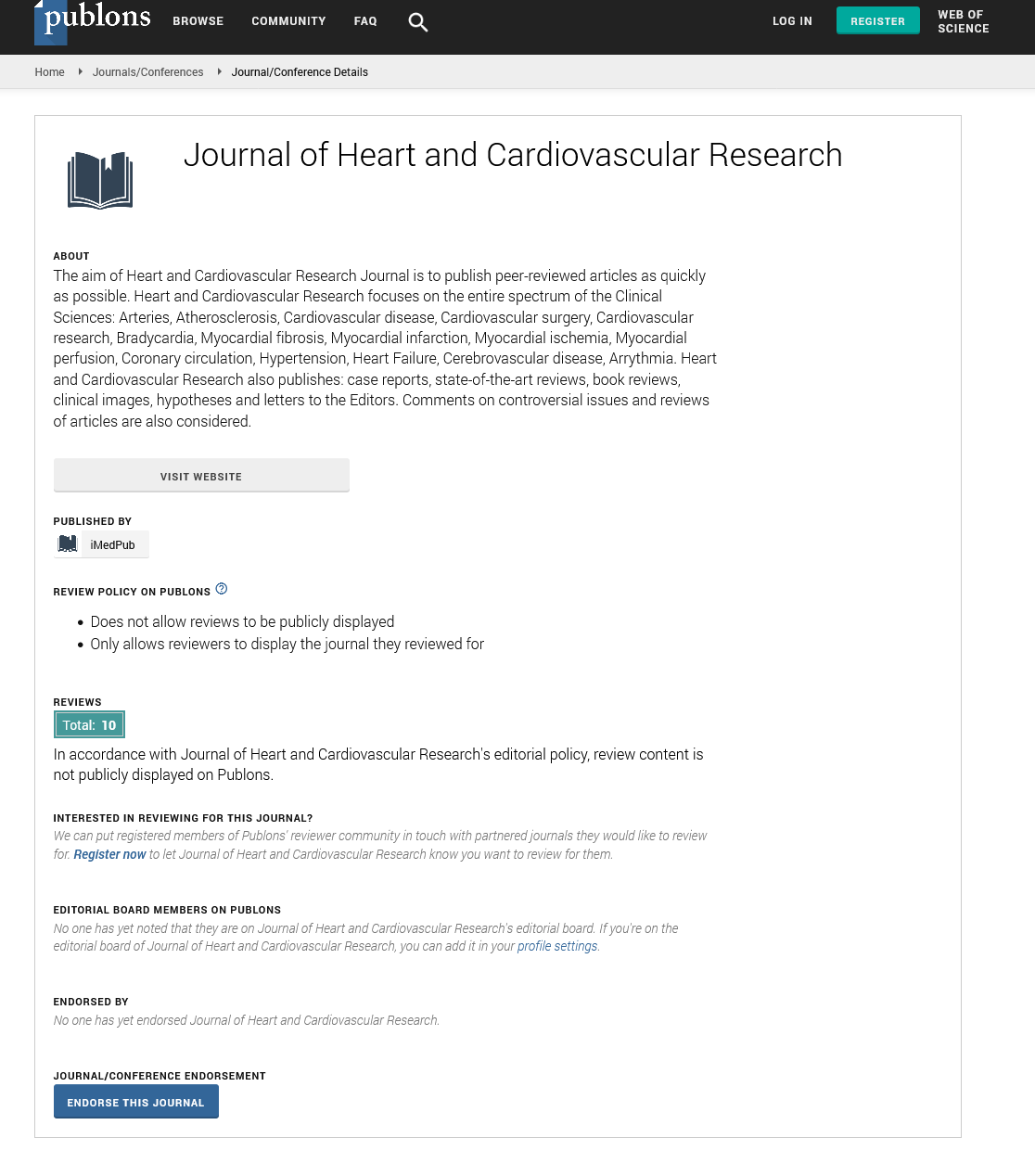ISSN : ISSN: 2576-1455
Journal of Heart and Cardiovascular Research
Stenting ductus arteriosus via axillary artery vs. femoral vein in infants
22nd International Conference on New Horizons in Cardiology & Cardiologists Education
March 07-08, 2019 Berlin, Germany
Murtaza Kamal, Nitin K Rao and Suman Vyas
Star Hospitals, Hyderabad, India
Posters & Accepted Abstracts: J Heart Cardiovasc Res
DOI: 10.21767/2576-1455-C1-003
Abstract
Introduction: Stenting of the ductus arteriosus is necessary to maintain duct dependent circulation. The ductal morphology predicts not only the technical difficulty in stenting but also the risks of restenosis necessitating reintervention.
Aim & Objectives: To retrospectively review the outcomes of ductal stenting in children via different routes, present a technique of ductal stenting via axillary artery and compare it with femoral access.
Materials & Methods: Twenty three patients with duct dependent circulation were treated with stent implantation. These patients were included in the study retrospectively. In 19 (82%) of these patients, duct stenting was done through the femoral venous route. In 4 (18%) of the cases the axillary artery was favored to transvenous approach for ductal stenting.
Results: PDA stenting was done for four cases in which axillary approach was used. All of the 4 cases received prostaglandin infusion. The median age at procedure time was 12 days (range: 4- 18 days) with a median weight of 2.9 kg (range: 2.7-3.3 kg). All the babies were term. One had pulmonary atresia intact septum, 1- complete AV canal defect with PA and unbalanced ventricles and 2 had TOF with PA. The median ductal diameter was 2.4 mm (range: 2.2-3.4 mm) with median ductal length of 15 mm (range: 10-22 mm). The median procedure time was 78 minutes (range: 70-118 minutes) with median fluoroscopic time of 32 minutes (range: 26-42 minutes). Fluoroscopic time was significantly shorter in those with axillary approach.
Conclusion: The axillary arterial access is an effective approach to stent the arterial duct in newborns with duct-dependent circulation. Compared with anterograde approach via the femoral vein, positioning the wire into the vertical duct via the axillary artery is much more feasible. This increases success rates as well as shortens the duration of procedure and reduces complications.
Biography
Google Scholar citation report
Citations : 34
Journal of Heart and Cardiovascular Research received 34 citations as per Google Scholar report
Journal of Heart and Cardiovascular Research peer review process verified at publons
Abstracted/Indexed in
- Google Scholar
- Sherpa Romeo
- China National Knowledge Infrastructure (CNKI)
- Publons
Open Access Journals
- Aquaculture & Veterinary Science
- Chemistry & Chemical Sciences
- Clinical Sciences
- Engineering
- General Science
- Genetics & Molecular Biology
- Health Care & Nursing
- Immunology & Microbiology
- Materials Science
- Mathematics & Physics
- Medical Sciences
- Neurology & Psychiatry
- Oncology & Cancer Science
- Pharmaceutical Sciences
